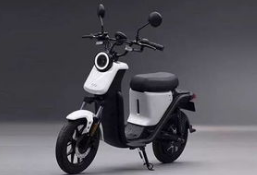- 阅读
- 阅读
- 技巧
- 百科
- 试题
- 文化
- 技能
Science & technology
科技版块
Electric vehicles
电动汽车
Horses for courses
物尽其用

If they do come up with a workable scheme, it might encourage producers of commercial evs in other countries to try something similar.
如果他们真的拿出了一个可行的方案,这可能会鼓励其他国家的商用电动汽车制造商尝试类似的东西。
But there are a lot of bumps in the road ahead before any of this will happen.
但在这一切发生之前,前面的道路上还有很多坎坷。
For one thing, it is not just a common specification for the battery that has to be agreed, but also the means by which it is attached and removed.
首先,这不仅是必须达成一致的电池规格,而且也包括连接和拆卸电池的方式。
That impinges on how companies design their vehicles, making agreement harder to come by.
这影响了公司设计汽车的方式,使得协议更难达成。
At present there is little standardisation in the ev business.
目前,电动汽车业务几乎没有标准化。
Batteries come in many shapes and sizes, and chargers work with some vehicles but not others.
电池有多种形状和大小,充电器适用于某些车辆,但不适用于其他车辆。
A lot of batteries are also tricky to remove.
很多电池也很难拆卸。
Increasingly, indeed, they are designed into vehicles as part of the structure.
事实上,它们越来越多地被设计成车辆结构的一部分。
Manufacturers who once assumed batteries would become commoditised now develop their own, employing them to provide commercial advantages such as increased range, faster acceleration and quicker charging.
曾经认为电池会商品化的制造商现在也在开发自己的电池,利用它们来提供商业优势,如增加续航里程、更快的加速和更快的充电。
The success of a battery-swapping scheme would thus depend on how its cost compared with charging batteries in situ -- though both options would probably be available on any given commercial vehicle.
因此,电池更换计划的成功将取决于它与就地充电电池相比的成本--尽管这两种选择可能都适用于任何给定的商用车。
For private cars, where leasing batteries has not been popular, success is less likely.
对于私家车来说,租赁电池并不流行,成功的可能性较小。
Battery-swapping schemes for cars do exist.
汽车电池更换计划确实存在。
Nio, a Chinese carmaker, provides swap stations in its home market, where many people live in apartments and so have no access to home charging.
中国汽车制造商蔚来汽车(NIO)在国内市场提供换站服务,那里有许多人住在楼房里,因此无法使用家用充电。
But most manufacturers are looking at better batteries and improved charging infrastructure.
但大多数制造商都在寻找更好的电池和更好的充电基础设施。
Tesla, America’s biggest ev producer, considered battery swapping but ditched the idea in favour of developing its own Supercharger network.
美国最大的电动汽车生产商特斯拉考虑过更换电池,但最终放弃了这个想法,转而开发自己的超级充电器网络。
And charging times on most networks are coming down, with some high-voltage systems able to top up batteries from 20% to 80% in under 20 minutes.
大多数网络的充电时间正在缩短,一些高压系统能够在20分钟内将电池从20%充满到80%。
That still does not overcome the battery-strain problem.
这仍然不能克服电池紧张的问题。
But future batteries, particularly the solid-state variety that some companies are developing, promise to be smaller and capable of greater range, so will need charging less often.
但未来的电池,特别是一些公司正在开发的固态电池,有望变得更小、续航里程更大,因此充电的频率将会降低。
Most private electric-car drivers will thus still need to keep their charging cables handy.
因此,大多数私人电动车司机仍然需要随时携带充电电缆。
来源:经济学人
参与评论